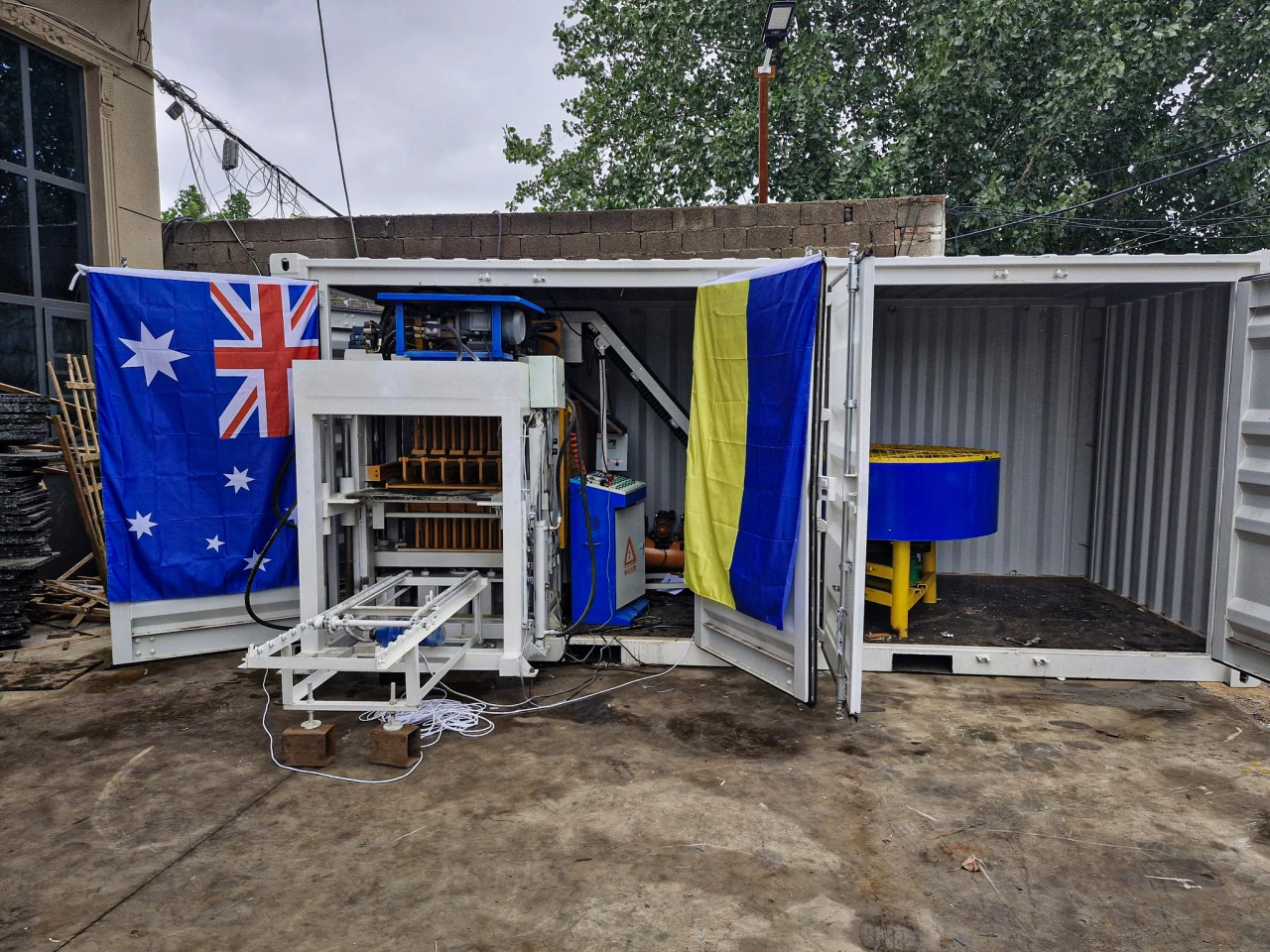If there’s one thing wars are good at, it’s turning buildings into rubble. But this mobile manufacturing machine does the reverse, turning rubble from destroyed buildings into bricks – bricks which can be stacked and joined together Lego-style to form mortarless structures. After years of development, the first mobile brick factory is on its way to Ukraine to help rebuild housing and infrastructure.
Western Australia is earning itself a reputation as a hotbed for brick-related technology. The world’s fastest brick-laying construction robot that recently landed in the US was developed by FBR in Perth, Western Australia, and now Mobile Crisis Construction (MCC) has emerged from the other side of town. Just like FBR, MCC has ambitions well beyond Australian shores. And given the state of the world and the increasing rate of natural disasters, it should find no shortage of uses.
Traveling in a 20-ft (6-m) standard shipping container, MCC’s mobile block factory is small enough to be rapidly deployed to disaster areas or war zones, ready to make use of rubble and waste materials in these locations. The factory isn’t completely self-contained, requiring a diesel generator for power and a freestanding hammer mill to crush the debris and waste into a fine powder that is then fed into the machine, along with a small amount of cement and water. In addition to rubble, other waste such as plastic bottles, glass and mine tailings can be used.

Once up and running, the factory can churn out 8,000 “Crisis Blocks” or “LayGo Blocks” a day – MCC says that’s enough to build one school, or three large houses, or 10 joined houses a week. Here's a demonstrator unit churning out some blocks in quick fashion:
The clever twist on the Lego name is apt, as these aren’t your typical bricks. Like their smaller plastic brethren, they feature an interlocking design that allows them to be laid without needing mortar – something that might be in short supply in many locations.
These modular, interlocking bricks can be produced in different sizes, including 100 x 100 mm, 200 x 100 mm, 300 x 100 mm, and 240 x 120 mm. The top mold can be swapped out to produce flat-topped blocks for window sills and the tops of walls.
If the blocks need to be laid horizontally rather than vertically, the factory has the ability to produce pavers of various heights as well. The blocks take seven days to cure and harden before they can be used for construction, and reach their full strength after 28 days.

The mortar-free design makes it easy for unskilled labor to lay walls, with holes in the blocks for rebar grouted in place vertically to run through the bricks and provide extra strength. The distance between the rebar is dictated by the earthquake zone of the building or other strength requirements. MCC says its blocks, and the walls made using them, are earthquake-, fire- and cyclone-resistant, and even exhibit superior performance to conventional brickwork.
But walls alone do not a building make, and finishing work including flooring, roofing, plumbing, fittings and electrical need to be carried out by local and NGO workers.
It costs AU$120,000 (US$79,000) to get a mobile factory to Ukraine, but after a successful crowdfunding effort the first unit is on its way to the war-ravaged country, where it will be used to help rebuild critical infrastructure and emergency shelter.
It will initially be used to aid rebuilding efforts in a relatively safe area near Kiev, but MCC hopes to expand operations to other areas. Funding is the major hurdle for that, so if you want to donate to the cause, you can, through the company's website. MCC is an Australian Registered Charity, so donations are tax-deductible.
Source: Mobile Crisis Construction via ABC
Update (July 31, 2024): This article originally stated the mobile factory was being transported in a 10-ft (3-m) shipping container. This was incorrect. It is a 20-ft container. The mill is being sent in a separate weatherproof container that will sit alongside the factory container. We apologize for the error, which has now been corrected.






